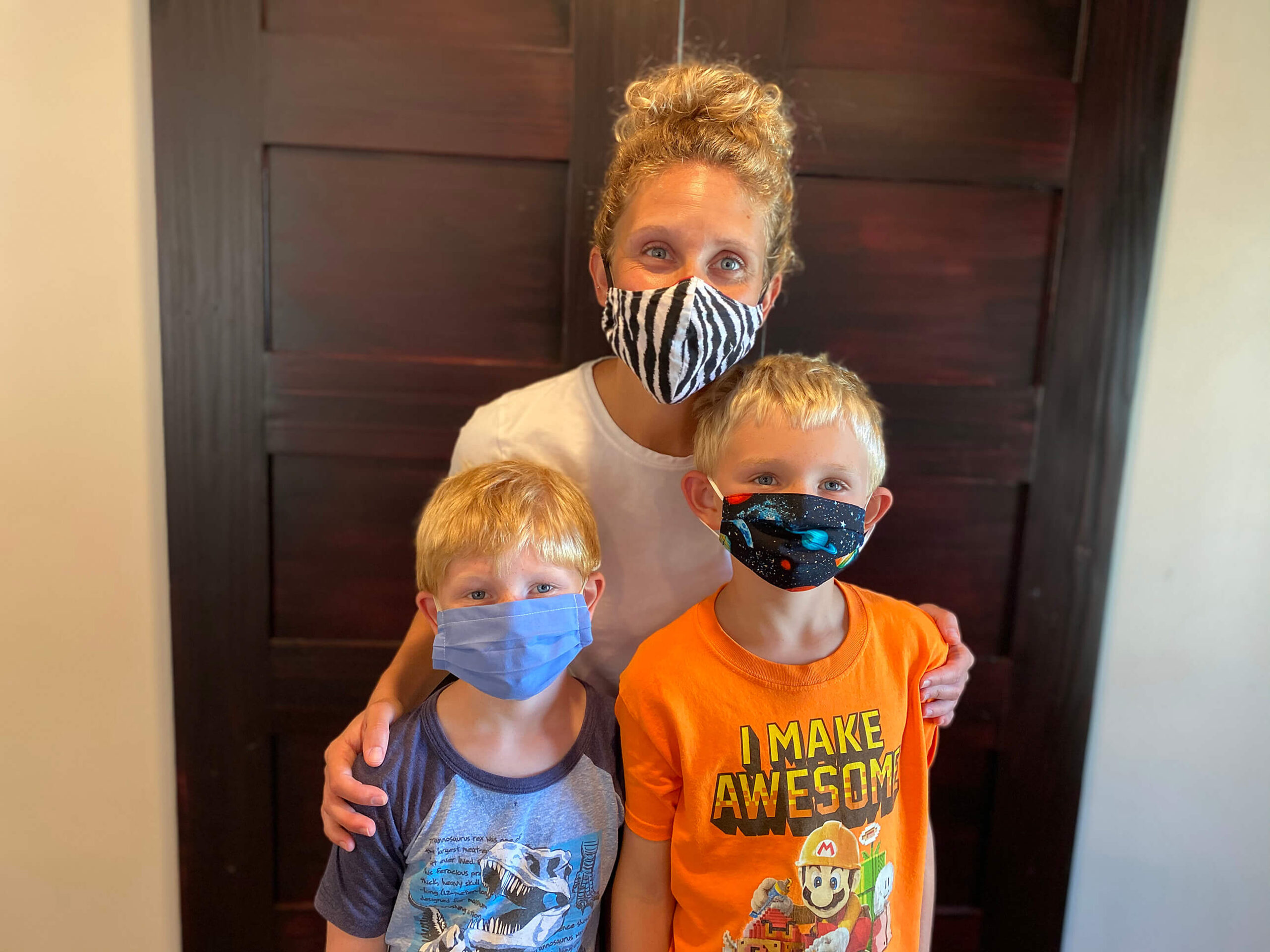COVID-19 delta variant to haunt Halloween, masks and vaccines best treats for healthy holiday

Nursing Clinical Assistant Professor Meg Sorg poses with half of her trick-or-treaters. The family will be taking precautions against COVID-19 this Halloween.Photo provided
Written By: Tim Brouk, tbrouk@purdue.edu
Like Jamie Lee Curtis in the “Halloween” movies, Indiana residents should safeguard their trick-or-treating experience on Oct. 31.
This Halloween will mark the second spooky holiday navigating the COVID-19 pandemic. More science is known about the deadly virus’ transmission, and there are vaccines for children between the ages of 12-17 and all adults. However, the delta variant has infected thousands of children ages 11 and younger, the prime demographic for trick-or-treaters.
Meg Sorg, clinical assistant professor in the Purdue University School of Nursing, said precautions should be made to protect the mini Michael Myers, baby Beetlejuices and Wonder Women in training who will arrive at thousands of doors this month demanding candy.
“Even those who are vaccinated are still recommended to wear masks in areas with high infection rates,” she added. “We have to think of the little ones because they’re not eligible for the vaccine yet.”
Precautions include mask wearing, even for the costumed kids, if interacting with other groups. If parents team up with friends or family during trick-or-treating, making sure they’re vaccinated is a safe step to traversing the neighborhood together. However, knowing the vaccination status of every homeowner or trick-or-treater is impossible. It’s best to be as safe as possible, Sorg said.
The best news for 2021 trick-or-treating is more knowledge on the spread of the virus and the availability of vaccines. Pamela Aaltonen, professor emerita in the School of Nursing, said outdoor activities offer significantly fewer threats to infection. Keeping the trick-or-treats outside in the neighborhood or at a community trunk-or-treat function is a best practice.

Pam AaltonenCharles Jischke
“While being outdoors is relatively safe, you might elect to wear a mask if a member of your household has a weakened immune system or is otherwise at increased risk for severe disease or is unvaccinated,” she said. “I would also have masks available for children over 2 years if you find yourself unavoidably in a crowded outdoor environment.
Some more good news: Researchers have found that COVID-19 transmission through the transfer of candy from the homeowner to the trick-or-treaters’ waiting bags is not a viable means of spreading the virus. In 2021, the Centers for Disease Control and Prevention shifted away from surface transmission of the virus and reinforced exposure to airborne respiratory droplets as the most prevalent infection avenue. In 2020, homeowners went great lengths to distribute candy without touching via chute, slide and even catapult.
“Last year, we didn’t have as much knowledge as to risks when it came to handing candy out to the trick-or-treater. Now, we don’t think that infection is likely (spread) that way,” Aaltonen said. “We still want to be cautious for the nonvaccinated.”
Aaltonen also recommended that trick-or-treating interactions should be short in order to keep the children moving along and avoid groups of ghouls and ghosts bunching up.
While young children can’t receive the COVID-19 vaccine yet, most can get a flu shot. Both Aaltonen and Sorg recommend young trick-or-treaters roll up their sleeves for this vaccine before rolling up to houses this Halloween, as flu season traditionally starts in the fall.
Sorg will be taking her young crew of a cow, husky, dragon and ninja trick-or-treating in North Manchester, and she will be taking precautions as her children are still too young for COVID-19 vaccines.
“The kids are ready to get out and have fun,” Sorg said. “But we’ll be maintaining the masking and monitoring symptoms. We won’t think twice to stay home if someone has a cough or sniffles. We’ll be sticking to home activities if there’s any chance of respiratory sickness.”